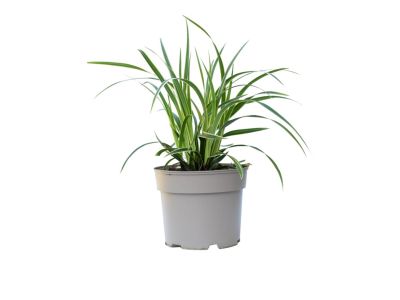Ornamental Grasses for Containers
Ornamental grasses may be native or cultivated species that provide linear interest to the landscape. The most common species for use in containers are the true grasses and members of affiliated families such as sedge, rush, and bamboo. These vertical growers are easy to care for and need little supplemental maintenance. Caring for potted grasses is an excellent project for even novice gardeners. Choose grasses that are the appropriate size for your containers and suitable for your zone. A few suggestions of good ornamental grasses for containers include:
Japanese blood grass Carex Fiber optic grass Melinus ‘Pink Champagne’ Foxtail grass
How to Grow Ornamental Grass in a Pot
Growing ornamental grasses in containers is a successful gardening strategy as long as you choose the right species and pot. Use a mixture of compost, topsoil, and a light mix of grit for most grasses. The pot must have drainage holes and an unglazed or lighter colored pot will evaporate excess moisture better than a glazed, dark colored pot. Also, when growing ornamental grasses in containers, ensure that the pot is wide enough to encompass the arching blades of grass and deep enough for the root system.
Ornamental Grass Care for Container Gardens
Most grasses are self-sufficient. You can plant just one specimen in a pot solo or add some color and smaller species around the edges for an interesting display. Potted plants need to be watered deeply infrequently. Allow the pot to dry out between watering to a depth of several inches (8 cm.) unless you are growing a water loving species or marginal grass. Caring for potted grasses involves fertilizing them once per year at the start of the growing season. Every two years you will need to remove the plant, replace the soil mix, and divide the grass. Use a soil knife or sod saw to cut the roots and plant into two pieces. Pull or cut out the parts that are dying out and then replant each piece separately. Ornamental grass care for container gardens includes raking or pulling out the dead blades. Some grasses will die back in cold weather, which is signaled by all the blades becoming brown. You can leave them until late winter to early spring and then cut them back to a couple of inches (5 cm.) above the crown. Brand new blades will grow and fill in the plant as spring growth arrives.
